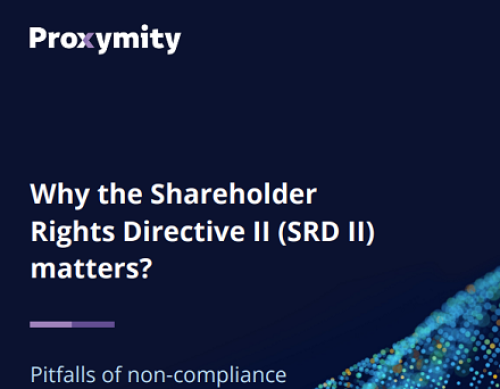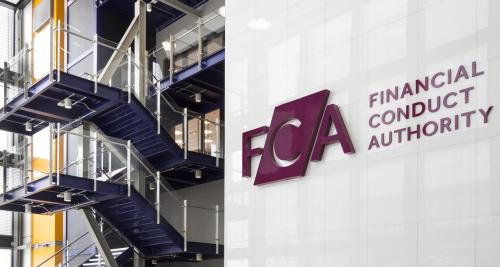More than 90 IR professionals gathered in sunny California at the end of March for the IR Magazine Think Tank – West Coast. It had been six months since IR Magazine’s previous think tank in the area, and there was a sense from the conversation this time round that several global megatrends – Mifid II, ESG and blockchain – are having a much more tangible effect on the IR community than in the past.
By grasping the implications of these trends, IR has an opportunity to provide greater strategic value to the C-suite and the board, according to one of the think tank’s panels. Here we recap some key highlights from the event.
Mifid II is changing behavior
The day’s discussions underscored how North American attitudes toward Mifid II are changing. Six months earlier, the prevailing opinion was one of slight skepticism, with most IR professionals favoring a wait-and-see approach. One buy-side panelist then even said: ‘It’s a sell-side problem, not an IR problem.’
But at the latest gathering we learned that several IROs have changed their behavior since the European regulation came into effect on January 3, 2018. Although this is not yet a result of Mifid II having an impact on North America directly, it’s informed by how the relationship between issuers and the sell side is changing in Europe – and an anticipation that a similar change could occur on a more global scale.
One small-cap IRO said she was proactively preparing for a decrease in analyst coverage. ‘I know decreased analyst coverage is coming so I’m trying to expand my base as it stands,’ she said. The value of the sell side is particularly apparent at small caps, where resources are scarce and IR teams may not have the targeting and surveillance tools that large and mid-caps take for granted, she explained.
Conversely, two large-cap IROs felt sell-side contraction would have a net positive result for their company by filtering out analysts who produce low-quality research and currently take up a lot of their time. Although they were hopeful Mifid II wouldn’t mean fewer opportunities to market in Europe, there was agreement that more diligence will be required from IR professionals to ensure they’re partnering with the right brokers and getting in front of the right investors.
‘ESG is a risk, not a reward’
During a lively panel discussion featuring an exchange-traded fund (ETF) portfolio manager, a managing director of a large passive investor and an investment analyst at an active manager, attendees were cautioned to start thinking about material ESG risks as part of their mandate. ‘ESG is a risk, not a reward,’ said the analyst at the active manager. ‘We’re not focusing on this because it’s a nice-to-have or an add-on.’
All three panelists implored audience members to think more carefully about the ESG risks inherent to their business. The panel discussed the case of a 3D printing company and how the use of plastic, where it is sourced and how it is processed would be an example of a material ESG risk inherent to the firm’s products.
The threat of losing a vote during proxy season is very real if ESG risks aren’t addressed. The active manager explained that his firm had voted against more than 60 percent of executive compensation packages in the US last year, and the passive manager warned that ‘just because we can’t sell, it doesn’t mean we go away.’
Although assessing risks is paramount, the panel also provided tips about how to improve ESG disclosure. When it comes to environmental risk disclosure, the Sustainability Accounting Standards Board has the best existing framework to explore, given that there is a different framework for each industry, according to the panel. In terms of social and governance issues, meanwhile, the panel pointed to the need for improved proxy statements. On a governance topic such as board diversity, for instance, there is a desire to see more than just gender and ethnicity – a board’s skills, educational background, professional experience and international experience are all as relevant in countering groupthink.
But there was one disclosure the panel had very little time for: the CEO pay ratio. ‘It’s just math,’ one panelist said to applause from the audience.
Refresh your story regularly
When it comes to shareholder engagement, you can’t have too much of a good thing – but you can certainly have too much of an average thing. Amid growing calls for more engagement throughout the year, IR, buy-side and communications panelists all noted that there’s no point reaching out to your investor base if you don’t have anything new to say.
The passive manager from the buy-side panel asked every audience member to check investors’ websites to review their positions before sending an email or making a call. It does more harm than good to reach out with a boilerplate message asking for a meeting, she added.
One IR professional explained how she regularly looks for ways to refresh her company’s story or highlight new aspects of it. Following on from the earlier ESG conversation, she pointed to social and governance issues as good ways to highlight something new or spark a conversation with an investor. This is particularly helpful when an issuer’s practices are at odds with an investor’s position on a specific issue: both buy-siders and IROs agreed that was the optimal time to set up a meeting.
IR people should also not take it personally if they contact an investor and don’t hear anything back, another panelist pointed out. Investors have been inundated with requests for meetings in recent years so if they don’t get back to you, that’s normally a good sign, he suggested.
Blockchain is being tested
Who really knows a Bitcoin from blockchain, or an initial coin offering from a general ledger? Although the origins of blockchain are mysterious (the identity of its creator is unknown) and murky (it was first used primarily to purchase illegal products on the dark web), it continues to grow in popularity.
The vision of blockchain is to have a financial system that is not managed by third-party institutions such as banks, financial advisers and transfer agents, and is therefore more transparent and accessible. As regulators and the general public continue to grapple with what the technology is and whether it is a flash in the pan, Banco Santander decided last year to run its AGM using blockchain technology. It will do so again this year and, according to one panelist, there is growing interest from other issuers.
This article was originally published in the Summer 2018 issue of IR Magazine.










